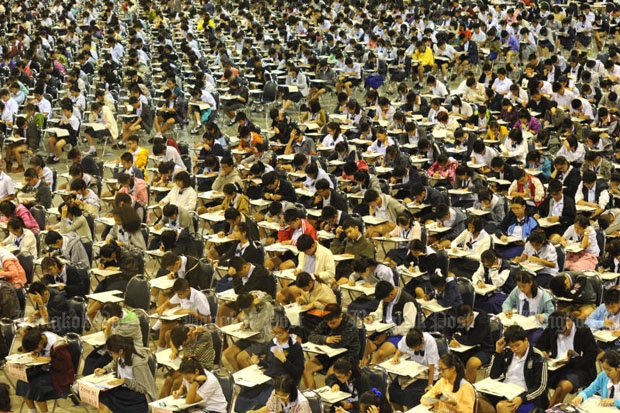
Enrollments at the country's most prestigious high schools should be scaled back to encourage more ninth graders to pursue their vocations by attending other schools, according to the chief of the Office of the Vocational Education Commission (Ovec).
Ovec secretary-general Suthep Chittayawong said he has already sent suggestions to this effect to the Office of the Basic Education Commission (Obec).
Mr Suthep said Ovec aims to increase the total number of students enrolling in 889 public and private vocational colleges nationwide from 221,862 last year to 329,069 in 2017. This marks an increase of more than 100,000 pupils in one academic year.
It would also shift the number of students studying vocational subjects to general education from the current ratio of 39:61 to 42:58.
Mr Suthep said that despite Ovec's large budget to improve its curriculum and modernise its equipment and study materials, vocational education in Thailand is still relatively unpopular.
"Some of the problems we have found, apart from violent brawls among vocational students, are poor school guidance systems and the fact that some big or prestigious schools are taking in too many students," he said.
Many schools do not offer career guidance, meaning students are not apprised of the most in-demand jobs, or which educational track they should study to land jobs later on, he added.
This is a concern as some 151,000 new graduates were still unemployed as of this February, according to the National Statistical Office of Thailand.
Meanwhile, some of the more sought-after schools in the country have admitted too many students in an attempt to receive higher subsidies from Obec, Mr Suthep said.
"In many [such] schools, there are at least eight classrooms for 10th-graders alone, and the average class size ranges from 40 to 50," he said.
"So I may ask Obec to reduce the number of classrooms to five if possible, or scale down the number of students per classroom."
Mr Suthep said that Ovec must find new ways to boost the number of vocational students to meet rising demand in the labour market.
Ovec has already come up with one such project. Dubbed "Tawisuksa", this allows students in general education classrooms to also sign up for some vocational courses. They graduate from the programme with both academic and vocational qualifications, he said.
Moreover, Ovec offers a dual-education system that combines apprenticeships at private companies and courses at vocational schools in one programme. Graduates get at least one year practical experience with a company.
"I'm satisfied with the results of both the Tawisuksa project and the dual-education system as they have boosted the number of vocational students for us in the past few years," said Mr Suthep.
Others disagree with the idea of trimming placements at popular schools because they say it undermines students' freedom of choice.
"If Ovec wants to boost the number of students enrolling in vocational education, I think it should promote its Tawisuksa project more because pupils can graduate with both academic and vocational degrees at the same time," said Narodom Narinrum, director of Bangkok's Dusitaram Secondary School.